Big Bend needs a Community Wildfire Protection Plan!! Also known as a CWPP, this is an important early step for us to take, so we can then work on completing the highest priority tasks immediately.
The BBCLT is working on getting some grant funding to help our community get on track with Fire Safety Planning and more Fire Resistant Forests and Home Sites. It’s a big (and life-saving) job, so we need everyone who is able to help to participate! Additionally, the grant efforts have led us to some outside agencies who are already helping us too.
JUNE 2021 UPDATE: Currently we are awaiting the grant review process to see how much funding we will receive. We have applied for a 150K grant to cover a community specific wildfire prevention plan including evacuation, shelter in place, communication & alarm systems, and education. The school will be receiving a portion of funding to go for classroom education and fire preparedness for kids.
*Please share this information with Big Bend and Madesi Valley community members who you may think would be interested.
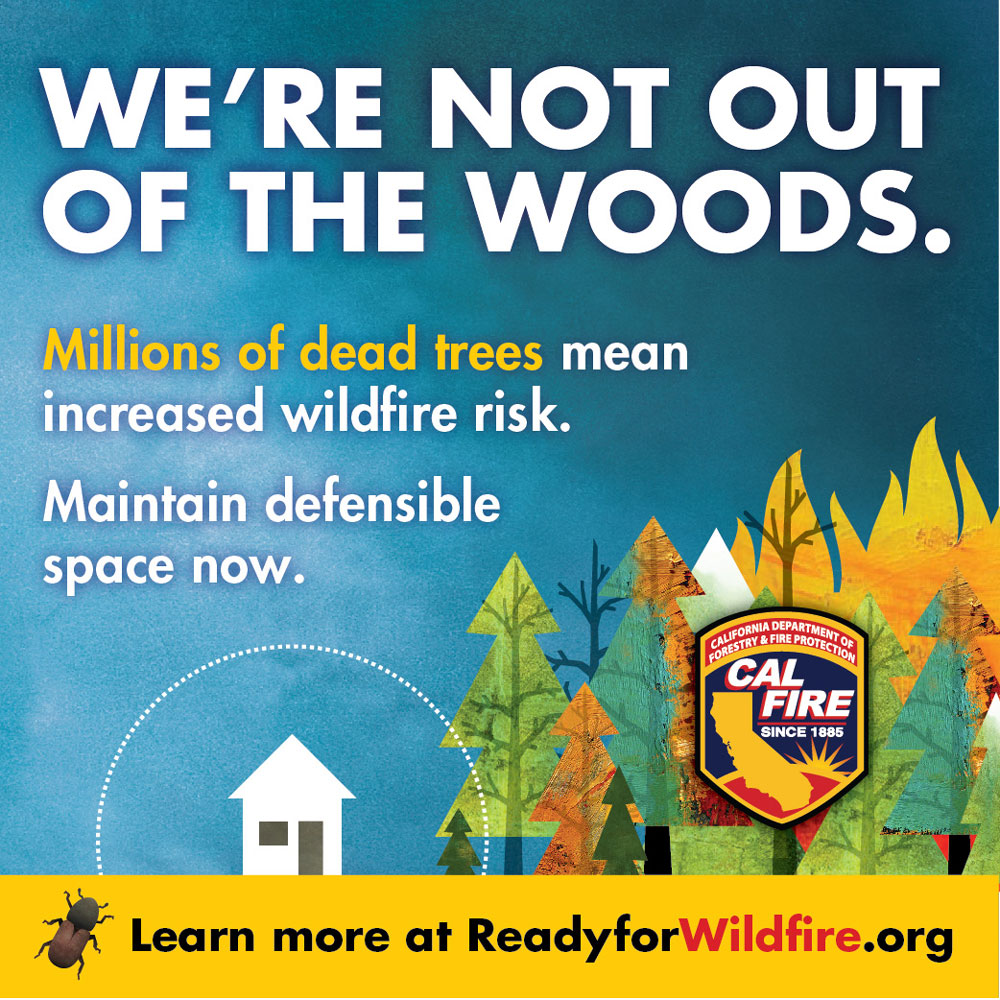
The community of Big Bend and the residents of this Madesi Valley are determined to increase our fire-safety preparedness, which has several components:
- Creating a clear Community Fire Plan and educating all residents about each part of the plan.
- Make Big Bend area more fire-safe (remove excess fuel loads and fire ladder fuels near homes and roads)
- Clarify evacuation routes, maps, and procedures and make sure they are well-maintained and known throughout the community.
- Continue working together and with outside resources to improve defensible space, including teams making Defensible Space for the most vulnerable residents, who can’t do the clear around their homes without such help.
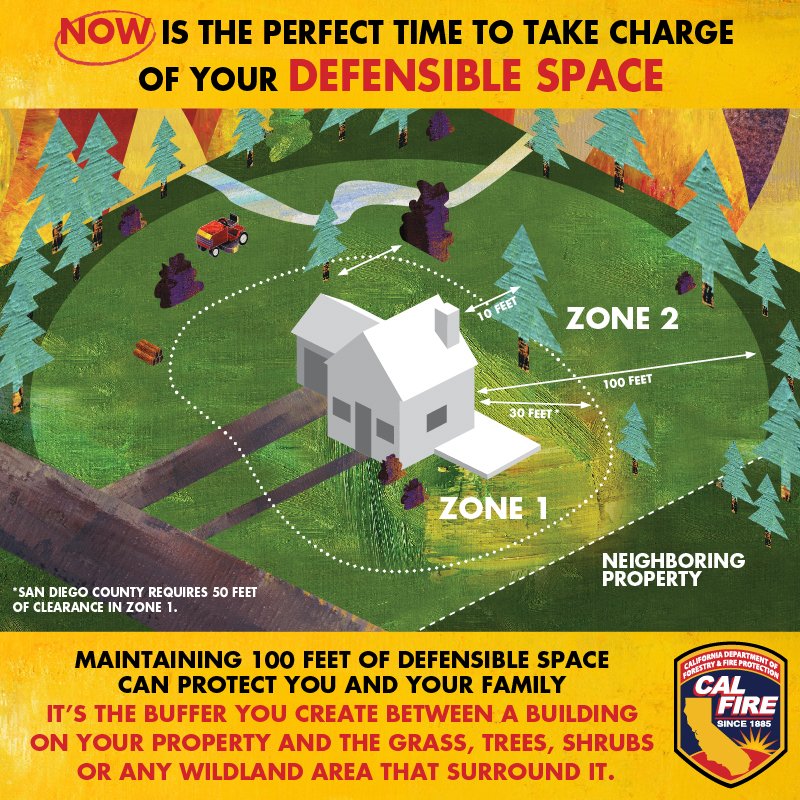
UPDATED! CalFire has now established “ZONE 0”, which is the area from 0-5 feet from the exterior walls of the home, where it is CRUCIAL to remove flammable materials such as leaves and dry grass and shrubs.
Did you know that your home (or buildings that are nearby) might contain old asbestos, which is a health hazard during fires? BE CAREFUL! Below is a link to the “Asbestos and Natural Disasters Guide” from the Mesothelioma Center (Mesothelioma is a lung disease that can be caused by exposure to asbestos)
https://www.asbestos.com/asbestos/natural-disasters/
~~~~~~~~~~~~~~~~~~~~~~~~~~~~~~~~~~~~~~~~~~~~~~~~~~
Community Fire Prevention Grant Application
Sponsored by The Big Bend Community Land Trust
The State of California (through CAL FIRE’s Fire Prevention Grants Program) has funding available to help communities like Big Bend to help pay for local projects and activities that address the risk of wildfire, reduce wildfire potential, and increase community resiliency.
The program funds three types of activities: hazardous fuels reduction, fire prevention planning, and fire prevention education with an emphasis on improving public health and safety while reducing greenhouse gas emissions.
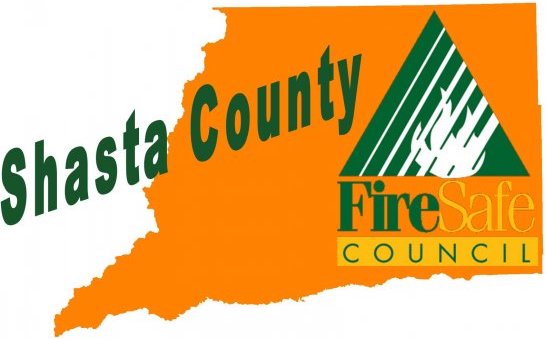
The grant application procedure is underway, and there are many options of what Big Bend can prioritize and request funding for in 2021 (and then for following years), such as these examples:
• Vegetation clearance in critical locations to reduce wildfire intensity and rate of spread.
• Creation of community-level fire prevention programs, such as community chipping days, roadside chipping, and green waste bin programs.
• Clearing near roads to provide for safer evacuation & emergency response.
• Purchase of fuel modification equipment not to exceed $250,000.
• Removal of dead and dying trees that pose a threat to public health and safety.
• Fire Prevention Education
• Workshops, meetings, materials, education to reduce wildland fires and acres burned.
• Education of the public on wildfire mitigation and risk reduction strategies.
• Wildfire risk or related mapping
• Evacuation plans and Community Wildfire Protection Plans (CWPP)
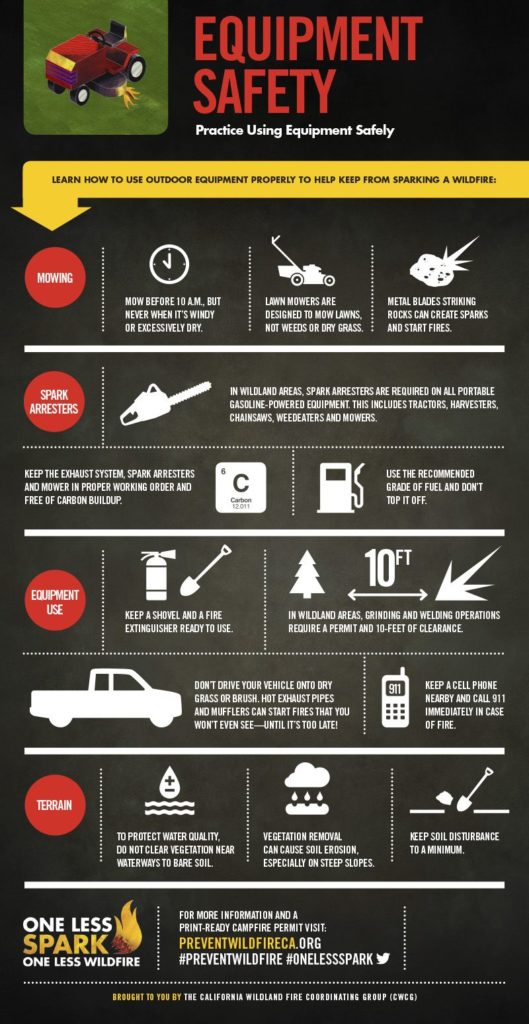
Fire Safety Resources- LINKS:
CalFire Website: Fire.ca.gov FRAP (free mapping system)
Fire Wise Community Information: https://www.nfpa.org
Fire Adapted Communities Network: https://fireadaptednetwork.org
1 Less Spark: https://www.nwcg.gov/term/campaigns/one-less-spark
FFF Science-Based Proven Solutions: https://forestfirefacts.org/
USA Government Wildfire Site: https://www.ready.gov/wildfires
Big Bend Community Land Trust Web Site: bigbendclt.net
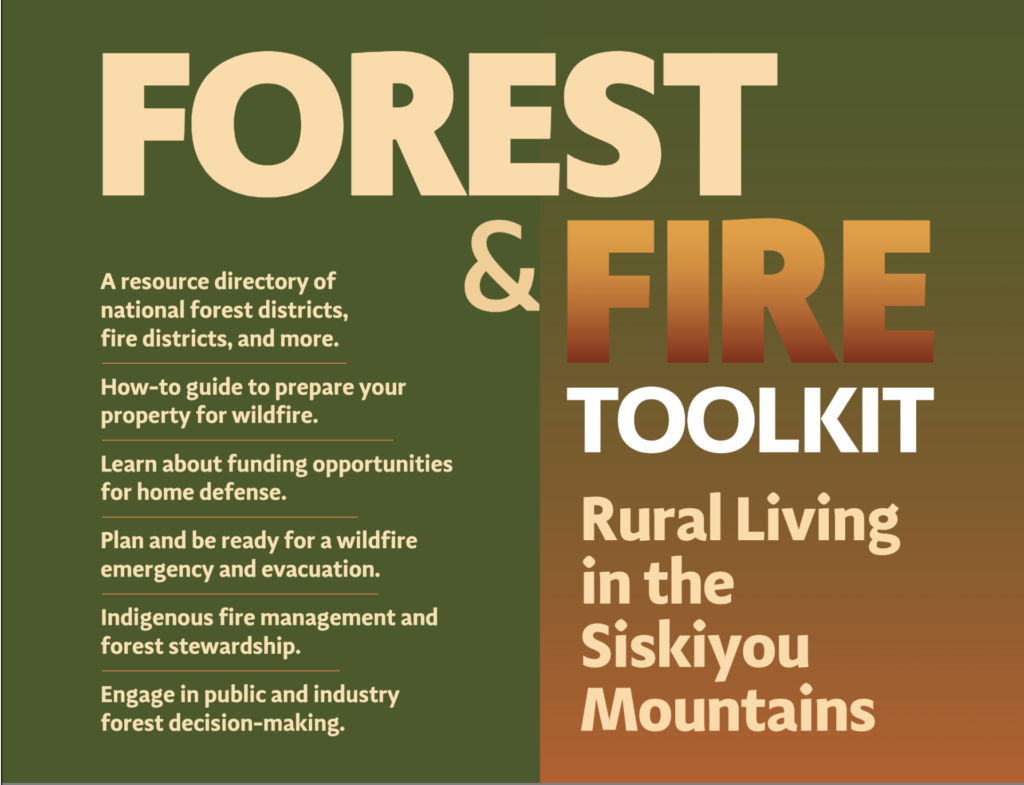
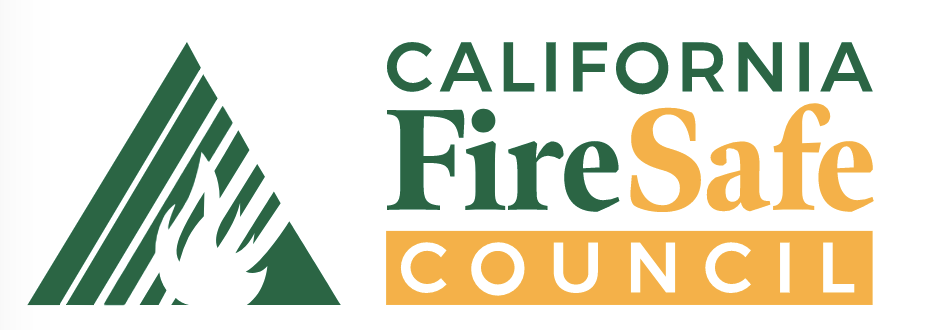

~~~~~~~~~~~~~~~~~~~~~~~~~~~~~~~~~~~~~~~~~~~~~~~~~~
Read selected relevant excerpts from the grant below, AND, if you would like to read and/or download the full four-page CalFire Fire Prevention Grant Program (AKA 2020-2021 California Climate Investments Fire Prevention Grants) FAQ (Frequently Asked Questions) information sheet, it’s available here:
https://www.fire.ca.gov/media/0o5nfft4/fire-prevention-grant-program-faq-2020-2021-v3.pdf
~~~~~~~~~~~~~~~~~~~~~~~~~~~~~~~~~~~~~~~~~~~~~~~~~~
THE FINE PRINT:
Excerpts from the Complex Grant
(Selected Details & Specific Information)
CAL FIRE’s Fire Prevention Grants Program provides funding for local projects and activities that address the risk of wildfire, reduce wildfire potential, and increase community resiliency.
Funded activities include hazardous fuel reduction, fire prevention planning, and fire prevention education with an emphasis on improving public health and safety while reducing greenhouse gas emissions.
The criteria that will be used to select projects include: wildfire threat; carbon storage potential; and landscapes where projects will have the greatest benefits, such as areas with elevated levels of tree mortality and increased wildfire threat.
Projects are evaluated based on the overall benefit to reduce the threat of wildfires to the greatest number of habitable structures, State Responsibility Area (SRA), and people.
Projects are selected on a competitive basis and consecutive awards are not guaranteed. Projects shall be designed to reduce greenhouse gas emissions during project activities and over time through wildfire reduction. To be most effective, multiple funding sources should be leveraged from each of the partners involved in projects, and priority will be given to projects that contain matching funds and leverage other financial resources.
Projects that benefit or focus on assisting those with special needs (i.e. low-income, disabled, or elderly) will receive additional priority, as will projects that demonstrate a carbon benefit by reducing the carbon emissions during the implementation of the project.
The Fire Prevention Grants Program funds three types of activities: hazardous fuels reduction, fire prevention planning, and fire prevention education.
Examples of qualifying projects and activities are listed below.
Hazardous Fuels Reduction
• Vegetation clearance in critical locations to reduce wildfire intensity and rate of spread.
• Creation or maintenance of fuel breaks in strategic locations, as identified in CAL FIRE Unit Fire Plans, a Community Wildfire Protection Plan, or similar strategic planning document.
• Removal of ladder fuels to reduce the risk of crown fires.
• Creation of community-level fire prevention programs, such as community chipping days, roadside chipping, and green waste bin programs.
• Selective tree removal (thinning) to improve forest health to withstand wildfire.
• Modification of vegetation adjacent to roads to provide for safer ingress and egress of evacuating residents and responding emergency personnel.
• Reduction of fuel loading around critical infrastructure to maintain continuity of government and other critical services, including, but not limited to fire, police, power, water, sewer, roads, etc.
• Purchase of fuel modification equipment not to exceed $250,000. Equipment is an item exceeding $5,000 or more per unit cost and has a tangible useful life of more than one year. Vehicle purchases are ineligible costs.
• Supplies include items under $5,000 per unit cost. Chainsaws are an example of a supply item and are not considered equipment.
• Projects to improve compliance with defensible space requirements as required by Public Resources Code Section 4291 through increased inspections and assistance for low-income residents.
• Removal of dead and dying trees that pose a threat to public health and safety. Fire Prevention Education
Community Preparedness and Education
• Workshops, meetings, materials creation, and other educational activities with the purpose of increasing knowledge and awareness of information that could be used to reduce the total number of wildland fire and acres burned.
• To educate the public on wildfire mitigation and risk reduction strategies.
• Activities are subject to CAL FIRE approval.
Fire Prevention Planning
• Wildfire risk or related mapping
• Creation or update of strategic wildfire planning documents, such as:
o Evacuation plans
o Community Wildfire Protection Plans (CWPP)
o Local Hazard Mitigation Plans o Safety Elements
o Wildfire prevention plans
• Research to determine standards for structural codes and regulations
• Development of evacuation plans
• Creation or updates to wildfire mitigation plans Eligibility,
Conditions and Important Points
Eligible applicants include, but are not limited to, the following:
• State Agencies
• Federal Agencies
• Native American Tribes
• Local government within or adjacent to State Responsibility Area (SRA), including:
o Incorporated Cities and Counties
o Fire Districts o Community Services Districts
o Water Districts o Resource Conservation Districts
o Special districts
• Certified Community Conservation Corps
• Fire Safe Councils with a 501(c)(3) designation
• Other non-profit organizations with a 501(c)(3) designation
In situations where a local government has contracted with CAL FIRE for fire protection services, CAL FIRE is considered a local government for purposes of this grant program.
Applicants may not be one of the following:
• A privately held for-profit company or corporation.
• Individual landowners requesting a grant specifically for a project to be completed on only his/her own land.
• Homeowners associations or other associations unless they have 501(c)(3) non-profit status.
These associations should consider applying through a fiscal sponsor such as eligible applicants listed above.
Examples of eligible costs include:
• Evaluation and identification of dead or dying trees posing an imminent threat to the public rights-of-way and public or private infrastructure, or high hazard zones, by a certified arborist or Registered Professional Forester (RPF).
• Removal of dead, dying or diseased trees posing an imminent threat to public rights-of way and public infrastructure, which may include trees on private property.
• Contracted tree removal, transportation, holding site fees, and disposal.
• Costs that are necessary and prudent to the accomplishment of the project.
Examples of ineligible costs include, but are not limited to:
• Removal of trees from private property that do not pose an imminent threat to public health and safety.
• Costs associated with improvement of landscaping, including planting. • Costs that are not directly associated with the project and/or in excess of 12% indirect costs.
• Costs already funded or budgeted through another source (i.e. supplanting).
• Income, fees, revenues, or wages lost or voluntarily waived by a local agency.
• Activities or costs associated with permanent work such the construction of a biomass facility.
• Costs incurred before or after the project performance period.
• Cost of preparing a grant and application.
• Late fees, penalties, and bank fees.
• Vehicle purchases 5 Examples of non-qualifying project types and activities:
• Purchase of capital equipment greater than $250,000.
• Purchase of capital equipment without demonstrating how the equipment will be utilized.
• Vehicle purchases.
• Installation, creation, upgrade, or maintenance of fire protection features, such as roads, bridges, structures or water storage facilities.
• Any project submitted by a for-profit company or corporation.
• Projects or activities utilizing CAL FIRE staff without corresponding reimbursements or requests seeking funding for services already provided by CAL FIRE. Conditions:
1. Grants can be made only to “eligible” applicants.
2. Projects must provide benefits to habitable structures in the State Responsibility Area (SRA). Non-SRA lands may be included within project boundaries, but project activities must provide a direct benefit to the SRA.
3. Projects utilizing partners must provide a letter of support/commitment from the entity as proof that they have contacted the entity and that the entity has the required resources (if needed) to commit toward the project.
4. Fire Prevention qualifying projects and activities are limited to those where the proposed project or activity addresses the risk or potential impact of wildfire to communities and forested landscapes.
5. Applicants must consider greenhouse gas emissions of project activities and plan to reduce emissions as much as possible during project activities.
6. Grantees must have the ability to satisfactorily plan, administer, and complete a grant project.
7. For some projects, the grantee may be required to prepare a California Environmental Quality Act (CEQA) or National Environmental Policy Act (NEPA) document. Those projects requiring CEQA/NEPA review are required to provide documented compliance within 12 months from the grant execution. CEQA/NEPA compliance must begin immediately after grant execution. Documented CEQA/NEPA compliance is required prior to commencing any ground disturbing activity.
8. Fire Prevention grant projects may be eligible to qualify for CEQA suspension pursuant to the Governor’s 10-30-2015 Emergency Proclamation. Grantees wishing to proceed 6 under the emergency proclamation’s suspension must certify that all the applicable criteria are met. CAL FIRE, in its sole discretion, must concur with the certification.
9. Projects proposed on a “forested landscape,” as defined in Public Resources Code (PRC) §754, will require an RPF to design and oversee any fuel hazard reduction vegetation removal
10. Projects outside of a “forested landscape” should consider the use of a professional ecologist, biologist, certified rangeland manager, arborist, RPF, or other professional with knowledge of local ecosystem processes to develop an appropriate fuel hazard reduction removal project.
11. CAL FIRE has the discretion to specify an earlier project completion date at the time of award based on the funds associated with the grant award. CAL FIRE will work with the awardees to ensure projects will still be achievable within the earlier timeframe. 7
12. Fuel reduction vegetation treatment prescriptions shall focus on increasing safety for the public and first responders as well as reducing fire hazard, improving tree growth, and increasing forest resilience. Treatments shall eliminate the vertical and horizontal continuity of vegetative fuels for the purpose of reducing the rate of fire spread, duration and intensity, fuel ignitability, or ignition of tree crowns.
13. Required project deliverables for all hazardous fuel reduction projects to be included in the Project Scope of Work: a. Pre-and post-treatment description of site conditions and project results relative to hazardous tree or vegetative conditions, wildfire hazard reduction goal accomplishments, and pre-and post-dead and dying tree counts or measurable metric for evaluation of the project (such as number of acres treated).
14. Grant applications must describe the method used to determine the grant amount requested. This methodology must include the grant costs less any income from forest products or other revenues received from the grant implementation.
15. All project and activity work related to grants must be completed by March 15, 2025 or March 15, 2026, depending on the source of the funds awarded.
16. Final invoices for grant-related work must be submitted to CAL FIRE no later than 30 days after the project completion date.
17. Projects must demonstrate all efforts to reduce greenhouse gas emissions. Projects most likely to have significant emissions reductions will be favored.
Important Points About CalFire Grant:
1. Each application should focus on one or more of the following major activities:
a. Hazardous Fuels Reduction
b. Fire Prevention Planning
c. Fire Prevention Education 8
2. Submission of Application to the CAL FIRE Fire Prevention Grants SharePoint folder, is due by May 19, 2021 at 3:00 PM PDT.
3. No reimbursable work on the proposed Fire Prevention Grant projects may commence until there is a fully executed agreement between CAL FIRE and the Applicant. An agreement is considered fully executed upon signature and approval by the State Fire Marshal or designee.
4. All project and activity work related to grants must be completed by March 15, 2025 or March 15, 2026, depending on the source of the funds awarded.
5. No ground disturbing work may commence until the requirements of CEQA/NEPA have been satisfied or the applicant has certified the tree mortality project per Appendix A
6. Agreements must be executed under this grant opportunity by October 31, 2021.
7. For hazardous fuel reduction and tree removal grants, the CAL FIRE Unit, Contract County (when grantee is an entity [like a city, etc.] within the Contract County) or designee must be contacted to conduct an inspection of the modification efforts prior to invoicing CAL FIRE for completed work.
8. When a Contract County is the grantee, the Contract County must contact the CAL FIRE Administrative Unit to conduct an inspection of the modification efforts prior to invoicing the CAL FIRE Administrative Unit for completed work. The CAL FIRE Administrative Unit or designee will conduct an inspection to verify that work to be invoiced has been satisfactorily completed according to the deliverable items described in the grant documentation. The invoice will be forwarded to the CAL FIRE Administrative Unit and subsequently forwarded to Region Headquarters for the second review. The region will then forward to Sacramento Headquarters for subsequent approval of payment. Reimbursement payments are expected to be issued 45 calendar days from the time an acceptable invoice is submitted.
9. A resolution or attesting document is required for all Fire Prevention Grants that involve nonprofit organizations and local government entities such as Fire Protection Districts and Resource Conservation Districts. The attestee cannot be the same individual as designated by the board to sign the agreement. Please refer to the sample resolution (Appendix B). 9 Note: Where the line indicates ‘whereas, the Board designates (designee’s title)’, list the title rather than an individual’s name. In the event the individual retires or leaves the organization, a new resolution designating a replacement will be required if a name is listed rather than the working title. The resolution should name the designee for not only entering into agreements on behalf of the board but also the authorized signatory for invoices.
10. The Fire Prevention grants are not designed nor intended to create or substantially support ongoing administrative positions.
11. A Quarterly Progress Report is required and will be due to the CAL FIRE Unit Project Manager within 30 days at the end of every calendar quarter, i.e. report covering January through March is due no later than April 30th (even if no fiscal activity has occurred):
12. A Final Report is required and will be due to the CAL FIRE Unit Project Manager within 30 days of the grant expiration or along with the grant final invoice:
a. The Progress Report and Final Report Template.docx found online at CAL FIRE Fire Prevention Grants
13.The inclusion of an indirect or administrative charge is acceptable for these grant programs, but must not exceed 12% of the total amount of grant funds provided to the grantee, minus equipment. The 12% maximum of indirect cost, applies to all entities including University of California (UC) and California State University (CSU) entities. Documentation related to the determination of the grantee’s indirect cost rate must be retained by the grantee for audit purposes.
14. All educational materials and planning documents created and used for a Fire Prevention Grant project must be submitted to CAL FIRE. CAL FIRE may retain copies of these materials and utilize them for CAL FIRE’s own purposes. Similarly, any Fire Prevention Grant project photos, videos, testimonials, or other similar information submitted to CAL FIRE throughout the performance of the project may be retained by CAL FIRE and utilized for CAL FIRE’s own purposes.
~~~~~~~~~~~~~~~~~~~~~~~~~~~~~~~~~~~~~~~~~~~~~~~~~~
Greenhouse Gas Emissions (GHG) Requirements California Climate Investments administered by CAL FIRE through the Forest Health, Fire Prevention, and Urban and Community Forestry Programs contribute to California’s climate goals by reducing emissions from wildfires, stabilizing long-term storage of carbon in biomass, and improving carbon sequestration in California’s natural and working forests.
In terms of direct emissions benefits, the objectives of the Fire Prevention Grants Program are to:
• Reduce GHG emissions from wildfire and prevent need for cleanup and rebuilding of communities following destructive wildfire events.
• Provide fire personnel with more opportunities to access the fire perimeter to extinguish fires more quickly, thereby reducing GHG emissions.
• Encourage projects that result in smaller scale fires to reduce carbon emissions and reduce the carbon impact.
• Improve health and resilience of treated areas for increased carbon sequestration.
• Improve public awareness and reduce human caused wildfire ignitions.
• Promote orderly growth and development through land use planning which helps to reduce GHG emissions. Because the intent of the program is to reduce the likelihood of wildfire from places where fire is not tolerable on the landscape – communities, homes, infrastructure, and other highly valued resources, these objectives are achieved most directly through avoided wildfire emissions. Eliminating wildfire starts, mitigating wildfires before they progress into wildland areas, and facilitating firefighting efforts and safety all contribute to reduced wildfire emissions over time.
The Fire Prevention Grants Program also includes support for planning, such as development of Community Wildfire Protection Plans, and education programs that promote fire-safe communities to capture the benefits and synergy of collective, community-wide efforts. However, fuel reduction activities also release greenhouse gas emissions at the time of treatment, and CAL FIRE must balance emissions costs and benefits of the Fire Prevention and Forest Health Programs to comply with the law. Minimizing emissions of fuel treatment activities, using disposal methods other than open burning, and optimizing vegetation health options in the development of treatment prescriptions are important steps in project development to achieve balanced emissions costs and benefits.
Awardees will be required to submit information about project size, vegetation type, location, and treatment area so that CAL FIRE staff may complete emissions calculations for the project. Calculations will be completed using an existing methodology produced by CAL FIRE and the California Air Resources Board for the Forest Health Program. Emissions effects of activities that do not fit the existing methodology will be described in detail.
The grant application review process will include consideration of project activities with emissions benefits. California Climate Investments (CCI) Full public disclosure is required to provide information on how administering agencies are investing appropriations from the Greenhouse Gas Reduction Fund (GGRF) and what benefits are being achieved from those investments. CAL FIRE is responsible for collecting project information and reporting information to CCI.
The application review involves three levels:
• Local – CAL FIRE Units & Contract Counties
• Regional – CAL FIRE Northern and Southern Regional Offices
• Statewide – Statewide review team. The statewide review team will prepare a list of recommended projects and activities for consideration by the Director of CAL FIRE. The Director will make decisions on approved projects and activities taking into consideration the recommendations of the statewide review team.
Emphasis at each level will be placed on projects and activities that address hazards to reduce potential risk from wildfire to communities and forested landscapes. Additionally, to the extent possible, a project or activity will not be selected if it conflicts or competes with another proposed or approved project.
Evaluation Factors (Ranking Criteria) In evaluating applications, CAL FIRE is seeking information that allows it to consider the following factors:
1. The grant application clearly identifies the focus of the grant as Hazardous Fuels Reduction, Fire Prevention Planning, or Fire Prevention Education
2. The project addresses hazards and risks from wildfire.
a. The project includes Fire Hazard Severity rankings and indicates areas and their relative proportion of Very High, High and Moderate Fire Hazard Severity Zones as adopted by the Director and identified in the CAL FIRE map located at Fire Hazard Severity Zones.
b. The proposed project is located near or substantially includes communities and forests at risk to damage from wildfire in the Wildland-Urban Interface (WUI) and adequately describes how it will address the hazards and risks from wildfire.
c. The project protects other assets related to communities in the WUI at risk of impact from wildfire. This includes community infrastructure such as, buildings, domestic and community water supplies, power lines, and communications facilities. If the project does involve community infrastructure, it must explain how it will address the hazards and risks from wildfire to these assets.
3. The project is related to or part of one or more strategic plans or tree removal plan:
a. The project is included in or consistent with one or more of the following plans:
-CAL FIRE Unit Fire Plan, Contract County Fire Plan, Local Fire Plan, a Community Wildfire Protection Plan (CWPP), tree removal plan, Fire Safe Council Action Plan, FIREwise Community Assessment, Local Hazard 13 Removal plan, Safety Element plan, or other local plan (identified in Scope of Work) that addresses the hazards and risks from wildfire.
b. The project proposes to create, or update, a long-term fire hazard reduction planning document affecting or involving communities in the WUI, such as a CWPP, Community Evacuation Plan. A strategic planning document would include a Safety Element of a General Plan and a Local Hazard Mitigation Plan with elements for increasing safety for the public and first responders.
c. The Fire Prevention project removes hazardous trees in collaboration with other entities, other funding sources, or as part of a larger tree mortality project.
d. The project considers other projects in the last five years in the Unit/Contract County (approved – but not started, in progress, or completed) and adds to those efforts.
e. The project will lead to the completion of or is tied to a current tree removal plan project.
f. The project strategically advances the protection of WUI across a region and/or the state, while increasing safety for the public and first responders.
4. The applicant has taken steps to reduce emissions as much as possible, such as chipping or mulching removed vegetation rather than burning it, or disposing of material through biomass markets. The applicant is willing and able to provide project data as requested to calculate project emissions.
5. Community support exists.
a. The project includes plans for external communications, such as planned press releases, project signage, community meetings or field tours that all, or in part, reach owners and residents in the project area.
b. Letters of Support have been obtained.
c. Written Letters of Commitment from partnering entities should be submitted with application.
d. Please note that although matching funds are not required, the existence of matching funds is a positive factor.
6. There is an implementation plan in place.
a. The project includes a detailed timeline that addresses potential limitations and includes specific tasks and milestones to measure progress during implementation of the project. 14
b. The project includes an accurate set of deliverables that are measurable and attainable.
c. The project is fully defined with metrics to measure progress and completion.
7. The project budget and narrative is clear and reasonable.
a. The proposed budget shows how grant funds will be spent by category.
b. Indirect costs are reasonable for the project proposed and must be 12% or less of the total grant request, minus equipment costs.
c. Costs are reasonable for the size, scope, and anticipated benefit of the proposed project.
d. For hazardous fuel reduction projects, the actual number of acres being treated is clearly defined.
8. There is demonstrated capacity to administer the grant.
a. The applicant shows an acceptable amount of experience in administering grants. This is largely based on successfully administering other grant-funded projects/activities over the past five years. Project proponents having no previous experience with similar projects should discuss any past experiences that may help show capacity to successfully complete the proposed project. This may include partnering with a more experienced organization that can provide project support.
~~~~~~~~~~~~~~~~~~~~~~~~~~~~~~~~~~~~~~~~~~~~~~~~~~
Big Bend Community Land Trust Articles of Incorporation:
The BBCLT is a 501(c)(3) Non-Profit Corporation founded for the following purposes:
a) To promote and provide education of the public regarding permaculture, sustainable agricultural practices, nutrition, culinary arts and alternative forms of building and social organization.
b) To acquire and steward property in the Madesi Valley for the demonstration of permaculture principles and for the educational purposes of the corporation.
c) To relieve conditions of poverty, dependence, chronic unemployment and underemployment, and the reduction of community tensions in economically depressed communities in Madesi Valley.
d) To acquire and steward property in the Madesi Valley to permanently preserve land for public uses, for outdoor recreation, as open space for the enjoyment of the public, or for protection of natural ecosystems.
